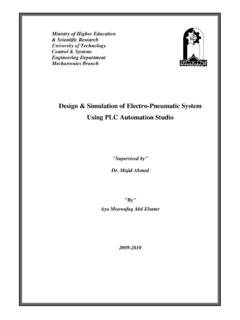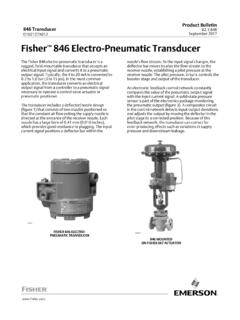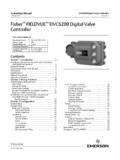Transcription of F-35 Air Vehicle Technology Overview - Lockheed Martin …
1 Approved for public release 5/8/18, JSF18-365 1 F-35 Air Vehicle Technology OverviewChris Wiegand,1 Bruce A. Bullick,2 Jeffrey A. Catt,3 Jeffrey W. Hamstra,4 Greg P. Walker,5 and Steve Wurth6 Lockheed Martin Aeronautics Company, Fort Worth, TX, 76109, United States of America The Lockheed Martin F-35 Lightning II incorporates many significant technological enhancements derived from predecessor development programs. The X-35 concept demonstrator program incorporated some that were deemed critical to establish the technical credibility and readiness to enter the system Development and Demonstration (SDD) program. Key among them were the elements of the F-35B short takeoff and vertical landing propulsion system using the revolutionary shaft-driven Lift Fan system .
2 However, due to X-35 schedule constraints and technical risks, the incorporation of some technologies was deferred to the SDD program. This paper provides insight into several of the key air Vehicle and propulsion systems technologies selected for incorporation into the F- 35. It describes the transition from several highly successful Technology development projects to their incorporation into the production aircraft. F- 35 Lightning II is a true 5th Generation trivariant, multiservice air system . It provides outstanding fighter class aerodynamic performance, supersonic speed, all-aspect stealth with weapons, and highly integrated and networked avionics. The F- 35 aircraft features many technological enhancements in air Vehicle and propulsion subsystems derived from predecessor programs.
3 These include the Subsystems Integration Technology (SUIT) studies [1-7], Joint Advanced Strike Technology (JAST) program, Air Force Research Laboratory s (AFRL s) Advanced Compact Inlet Systems (ACIS) program, Vehicle Integration Technology Planning Studies (VITPS) studies [8, 9], More-Electric Aircraft (MEA) studies [10], and Joint Strike Fighter (JSF)/Integrated Subsystems Technology (J/IST) demonstration program [11-20]. Additionally, numerous independent research and development (IRAD) and contract research and development (CRAD) projects were completed that formed a part of the F-35 design basis [ 21-36]. Many of these technological enhancements were not incorporated into the X-35 demonstrator due to schedule constraints to complete the flyable demonstrator aircraft.
4 They were also postponed due to the results of a technical risk assessment that made them undesirable candidates for the X-35. Instead, the full development and integration of these technologies were deferred for incorporation during the Engineering and Manufacturing Development (EMD) phase (later known as the system Development and Demonstration [SDD] program). This resulted in the final F-35 design configuration. Enormous efforts from these less well-known predecessor projects produced many of the significant technical achievements that provided necessary technical maturity and risk reduction. This allowed Lockheed Martin to proceed with them confidently in the EMD proposal.
5 The production F-35 incorporates a highly integrated air Vehicle subsystems architecture that reduces overall aircraft size and takeoff gross weight. It does so by replacing the federated, individual subsystems used in other legacy aircraft. Low observable ( LO) technologies are incorporated into the engine inlet and exhaust nozzle, and the F-35B short takeoff and vertical landing (STOVL) propulsion system , with its revolutionary integrated flight propulsion controls, provides unprecedented capabilities. The system represents a revolutionary step-increase in vertical lift , compared to predecessor aircraft. Its fault-tolerant controls are seamlessly integrated with the aircraft control laws, minimizing pilot workload across the entire flight envelope from hover to supersonic flight [36].
6 1 Systems Engineering Senior Staff Specialist, F-35 Power and Thermal Management system , 1 Lockheed Blvd. 2 Director, F-35 Air Vehicle , 1 Lockheed Blvd. 3 Systems Engineering Senior Manager, F-35 Vehicle Sciences and Systems, 1 Lockheed Blvd. 4 Lockheed Martin Senior Fellow, F-35 Air Vehicle , 1 Lockheed Blvd. 5 Systems Engineering Senior Manager, F-35 Propulsion and Flight Controls, 1 Lockheed Blvd. 6 Lockheed Martin Fellow, F-35 Propulsion and Flight Controls, 1 Lockheed Blvd. T 2018 Aviation Technology , Integration, and Operations Conference June 25-29, 2018, Atlanta, Georgia Copyright 2018 by Lockheed Martin Corporation. Published by the American Institute of Aeronautics and Astronautics, Inc.
7 , with permission. AIAA AVIATION Forum Approved for public release 5/8/18, JSF18-365 2 The key air Vehicle and propulsion systems technologies selected for incorporation are depicted in Fig. 1. This paper focuses on the evolutionary path followed to develop these technologies. The final F-35 aircraft subsystems [35], propulsion [ 36], and mission systems [ 37], as well as the SDD program, are discussed in greater detail in supporting publications. Each of the items featured in Fig. 1 represents a significant aircraft capability enhancement that added to the overall success of the F-35 configuration. Successes in the associated development programs for these led to their incorporation into the F-35 design baseline entering the SDD program.
8 Fig. 1 Advanced technologies selected for F-35 air Vehicle and propulsion systems incorporation. The various development projects that evolved into the systems configurations used in the F-35 spanned the 1990s during the period preceding the winner of the JSF competition. Figure 2 provides key development milestones leading to the incorporation of selected technologies into the F-35 program. The J/IST integrated subsystems development occurred in parallel with the Concept Development Program ( CDP). Interestingly, in it the various JSF competitors cooperated in a collaborative environment, sharing all results and data. This allowed the risk reduction activities associated with the integrated Vehicle systems to be pursued without the need to encumber the Concept Demonstrator Aircraft ( CDA) aircraft schedule, and enabled the final results and lessons learned to be incorporated into the F-35 at the outset of the SDD program.
9 During the same period, numerous IRAD and CRAD studies evaluating potential propulsion innovations continued. As with the J/IST results, several of these were incorporated into the F-35 after the SDD contract award. Significant technical risks associated with the diverter-less supersonic inlet (DSI) and LO axisymmetric nozzle, and STOVL propulsion system configurations were retired in parallel with the CDA work, culminating in flight demonstrations showing the maturity and efficacy of the concepts. As an example, dual-redundancy features of the STOVL exhaust nozzle were developed in parallel with the CDA program and incorporated during SDD. Approved for public release 5/8/18, JSF18-365 3 Fig.
10 2 JSF program air Vehicle and propulsion systems Technology development roadmap. Air Vehicle Design StudiesAircraft subsystems have traditionally been designed using a federated approach consisting of a number ofindependently designed subsystems. JSF-sponsored studies showed the potential for significant benefits from integrating these functions. This applied to three subsystems: flight controls and actuation systems, electrical and auxiliary power systems, and the environmental control system (ECS). Results from the studies showed that the effective integration of these three key subsystems could significantly improve aircraft performance and dramatically reduce the amount of equipment required.
















